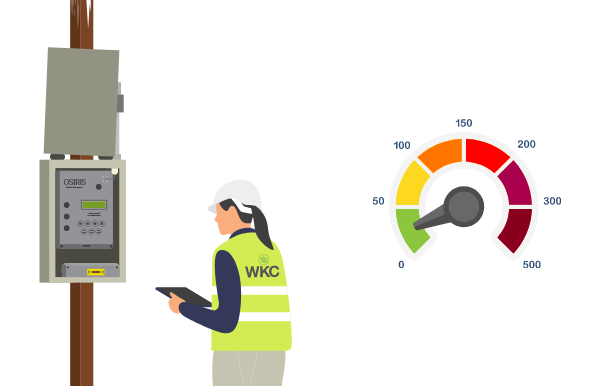Baseline Air Quality Monitoring
The objectives of baseline ambient air quality monitoring are to provide data on:
- Existing conditions within the study area
- The areas where the highest concentrations of pollutants occur, to which people are likely to be directly or
indirectly exposed - Pollutant concentrations to which the general population and ecological systems are exposed, in order to determine impacts
- Transboundary pollution and resultant effects
To achieve their goals, the monitoring stations need to be correctly located and must meet certain location criteria in the immediate vicinity of the monitoring station.
A variety of air quality monitoring technologies are available, including full reference-grade monitors, mobile air quality sensors, stationary low-cost sensors, passive samplers (diffusion tubes), satellite monitoring technology, and alternative forms of monitoring, all with differing cost requirements.
When determining which type or types of monitoring technology will be the best fit for a project or program, it’s helpful to start by looking the purpose of the study (for example use of data in the context of an Air Quality Impact Assessment or Environmental and Social Impact Assessment (ESIA) versus measurement for regulatory compliance purposes).
A key aspect that feeds into the air quality impact assessment is the establishment of baseline air quality data. Establishing baseline air quality is an important step in determining (i) whether the airshed is degraded or not, which in turn dictates the emission guideline values applicable to a project and (ii) whether emissions offsets are required. Data is usually collected on ambient concentrations of relevant parameters including, for example, PM10, PM2.5, SO2 (when sulphur containing fuels are used), NOx, and ground-level ozone. Data should be collected within a defined airshed encompassing the proposed project, over averaging times consistent with relevant ambient air quality standards (such as 1-hour maximum, 24-hour maximum, annual average).
Our teams regularly collect ambient air quality data for air quality impact assessment purposes, and have successfully undertaken baseline air quality monitoring campaigns in over 20 countries including Saudi Arabia, UAE, Iraq, Nigeria, Ghana, Guinea, Rwanda, South Africa and Mongolia.
Contact us for advice on how best to design your ambient air quality monitoring program to suit the needs of your ESIA or project requirements.
Click here to view our Air Dispersion Modelling services.


